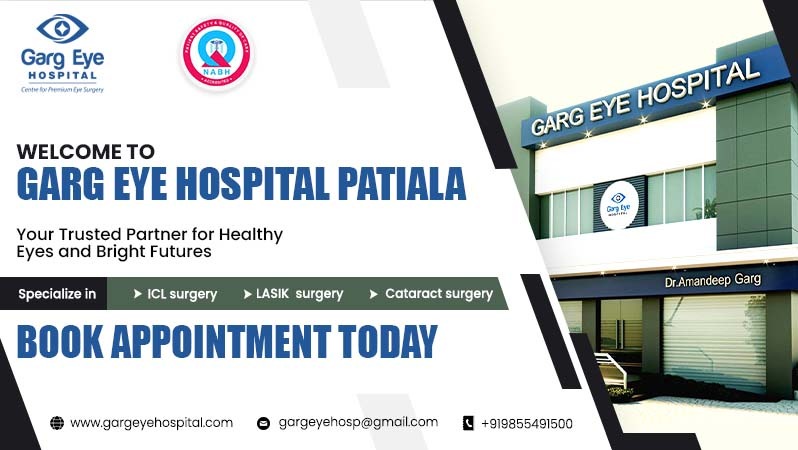Astigmatism is a mainly misunderstood term; it is not an eye disease, but a defective error similar to farsightedness or nearsightedness. Astigmatism is the most common type of prescription found when determining the power someone needs for glasses or contacts.
What is Astigmatism?
Astigmatism is a widespread eye condition that concerns your cornea – the front, clear cover of the eye. Light cannot properly reach the retina when the cornea is irregularly shaped. This can cause blurred vision, even after you’re nearsighted or farsighted. Due to the decreased ability to bend light appropriately, moderate to severe amounts of astigmatism can cause eye discomfort and headaches. In many cases, farsightedness or nearsightedness problems can accompany astigmatism, and affecting both eyes’ capability to refract light. Many patients have been told that they cannot get LASIK with astigmatism, but this is an outdated statement. For over a decade, the technology has existed to correct astigmatism with LASIK and PRK.
What is LASIK Surgery?
Now we all know what is astigmatism and how it can affect our eyes badly. it’s important for everyone to know about LASIK before deciding if it’s right for you. LASIK surgery is 100% bladeless and uses an excimer laser for acute precision, speed, and effectiveness. It starts by making a small flap in your corneal tissue through which it comes the underlying tissue that needs to be reconstructed. The invisible ultraviolet rays are used to reshape the tissue into the pre-planned shape that has been decided upon by your doctor. After completing the treatment, the corneal flap is put back into its position. Since there were no blades used, there were no sutures or any kind of stitches. The only thing you’ll need is prescribed anti-inflammatory eye drops to prevent infection.
To maintain safety, state-of-the-art computer technology is used to monitor your eye problem to know that it does not move during the procedure. LASIK corrective eye surgery is one of the safest surgeries and the fastest ways to provide better vision in your life.
Can LASIK Fix Astigmatism?
LASIK (laser-assisted in situ keratomileusis) surgery is a type of surgery motive to corrects vision problems by reshaping the cornea. When we want to correct astigmatism, the procedure removes a thin layer of tissue from the cornea in a pre-planned pattern, reshaping the cornea to correct the problems that can create astigmatism.
By redesigning the cornea, light can be focused onto the retina properly to remove or reduce the need for glasses or contacts and enhance overall visual clarity.
LASIK can typically correct up to 6 diopters of astigmatism, which is considered moderate. If your astigmatism is more critical than that, LASIK may not be a good option for you it can create bad effect on your eyesight.
Your optometrist can play an important role by examining your eye to determine if LASIK can help your vision. They will make sure that the curvature and thickness of your cornea and the overall health of your eyes determine if LASIK is an option for you.
Limits to LASIK for Astigmatism
There are some corneal diseases, such as keratoconus, that can cause a patient to have astigmatism due to overall cornea instability. Keratoconus causes regular incapacitation of the corneal tissue and causes patients to develop larger amounts of astigmatism over time. In this specific case, neither LASIK nor PRK should be performed because it would compromise the already fragile corneal structure.
What to Expect During the LASIK Procedure
The LASIK procedure is quite safe and straightforward. Your doctor will give you a series of eye drops to help reduce discomfort during the procedure. Next, your doctor will use equipment to avert your eyes from blinking and to keep them focused. A laser creates a small flap in the cornea, giving your doctor access to the tissue beneath.
The cornea is then redesigned by adjusting the curvature and thickness with another laser, and the flutter is closed and generally heals without stitches. The entire procedure mainly takes around 10-15 minutes per eye.
The success rate of LASIK surgery in enhancing astigmatism is relatively high, usually making LASIK an effective treatment option. According to data, approximately 95% of all patients who do LASIK surgery for astigmatism experience for improved vision.
While it’s a largely effective treatment option, it only suits some with astigmatism. Firstly you have taken an appointment schedule with your eye doctor to determine if you are a candidate for LASIK.
Correct Your Vision Long-Term with LASIK
With advancements in medical technology, LASIK surgery is the best option to better your vision and improve your overall quality of life. However, it is important to schedule an appointment with the Eye Care Center to determine if LASIK is a good fit for your eyes.
Factors that may affect your eligibility include the severity of astigmatism, overall eye health, and age. An appointment can help to determine a course of action if you’re considering LASIK for your better vision.


